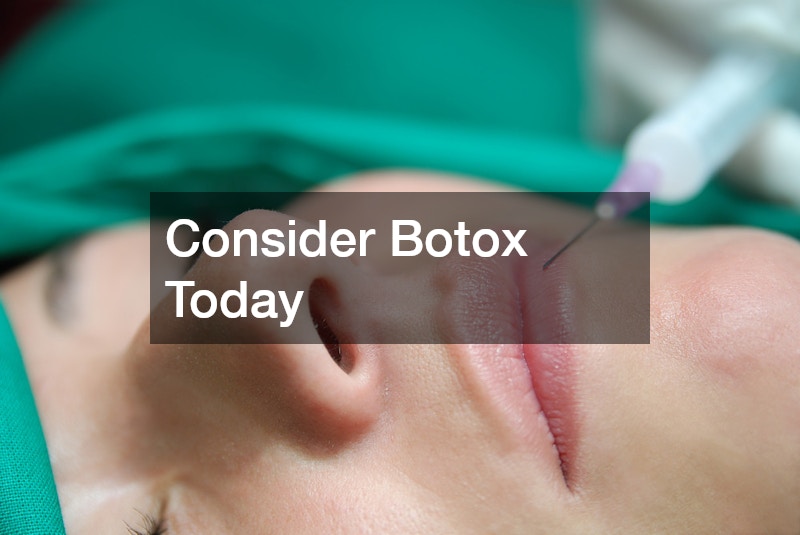The Amazing Benefits Botox Can Offer You
Botox is widely recognized for its ability to enhance aesthetic appearance, but its benefits go far beyond cosmetic enhancements. In this article, we will explore the diverse advantages Botox can offer, addressing some of the most frequently asked questions about its uses and benefits. By understanding both cosmetic and medical applications, you can learn how Botox fits into various aspects of wellness and beauty.
1. How Does Botox Work?
Understanding the Mechanism of Action
Botox works by blocking nerve impulses that cause muscles to contract, which in turn relaxes the muscle and reduces the appearance of wrinkles. This temporary paralysis can last for several months, making it an effective short-term solution for certain cosmetic issues. The effect of Botox allows for smoother skin without the need for invasive surgery.
The Science Behind Botox
The biochemical process involves a neurotoxin known as botulinum toxin, which interrupts the release of acetylcholine, a neurotransmitter. When acetylcholine is inhibited, the targeted muscles have decreased activity, leading to the relaxation effect Botox is known for. This scientific approach makes Botox a leading choice for both aesthetic and medical treatments.
Comparing Botox to Other Treatments
When compared to other treatments like dermal fillers or surgical options, Botox stands out for its non-invasive nature and quick application. Unlike permanent surgery, Botox provides a temporary option that can be tailored to meet individual cosmetic needs. These qualities make Botox a popular option for those seeking effective yet reversible aesthetic results.
2. What Are the Cosmetic Benefits of Botox?
Reducing Fine Lines and Wrinkles
Botox is renowned for its ability to minimize signs of aging by smoothing fine lines and wrinkles. This effect is most commonly sought in areas like the forehead and around the eyes, where expressions frequently cause lines to form. As a result, Botox helps achieve a more youthful appearance without significant downtime.
Lifting Sagging Skin
For those seeking a non-surgical facelift, Botox offers an effective solution for mild to moderate sagging. Through strategic injections, Botox can provide subtle lifts to areas such as the eyebrows, enhancing the overall facial contour. These improvements can significantly boost one’s aesthetic confidence.
Enhancing Facial Symmetry
Facial symmetry is often associated with attractiveness, and Botox can be used to correct minor asymmetries in facial features. By carefully targeting specific muscle groups, practitioners can improve the balance of the face, achieving a more harmonious appearance. This application enhances the overall aesthetics of the facial structure.
3. Are There Medical Uses for Botox?
Chronic Migraine Relief
In addition to cosmetic applications, Botox is widely used for medical purposes, particularly in treating chronic migraines. Patients receiving Botox for migraines typically experience a reduction in headache frequency, offering substantial relief from persistent symptoms. This application underscores the versatility of Botox as a therapeutic tool.
Treating Hyperhidrosis
Botox has proven effective in treating hyperhidrosis, a condition characterized by excessive sweating. By blocking the nerve signals responsible for triggering sweat glands, Botox helps manage the symptoms of hyperhidrosis for several months. Patients often find this treatment life-changing, as it provides relief from socially and physically uncomfortable conditions.
Alleviating Muscle Spasms
Botox is also utilized to reduce muscle stiffness and spasms in various medical conditions. By relaxing the muscles that cause these involuntary contractions, Botox helps improve quality of life for patients with disorders like cervical dystonia. This therapeutic use underscores Botox’s wide applicability beyond aesthetics.
4. What Should I Expect During a Botox Procedure?
Preparing for the Procedure
Proper preparation is key to achieving the desired outcomes from a Botox procedure. Patients are often advised to avoid alcohol and certain medications, like blood thinners, leading up to the treatment to minimize bruising. A consultation with the practitioner will ensure an individualized approach tailored to specific needs.
The Procedure Itself
A typical Botox session is quick, often completed within minutes, and involves minimal discomfort due to the use of fine needles. After marking the targeted areas, the practitioner administers the injections precisely to achieve optimal results. Many people appreciate the convenience of Botox as a lunchtime procedure.
Post-Procedure Care and Recovery
Following a Botox treatment, patients are generally advised to avoid lying down or engaging in strenuous activity for several hours. It’s also recommended to keep the treated area clean and free from pressure to ensure optimal outcomes. With minimal downtime, most individuals can return to regular activities swiftly.
5. Are There Any Risks or Side Effects of Botox?
Common Side Effects
Some of the most common side effects of Botox are temporary and include bruising, redness, and mild pain at the injection site. Patients may also experience headaches or nausea shortly after receiving the treatment. While generally mild, these symptoms typically resolve on their own within a few days.
Minimizing Risks
To reduce the likelihood of side effects, it’s crucial to select a qualified and experienced practitioner. Following pre- and post-treatment care guidelines rigorously also contributes to minimizing risk and enhancing results. Careful adherence to professional advice ensures the safest Botox experience possible.
When to Seek Medical Advice
Though rare, severe reactions such as difficulty breathing or swallowing require immediate medical attention. It’s vital to stay vigilant for signs of allergic reactions or other complications post-treatment. Communication with your healthcare provider is key to addressing any concerns effectively.
6. How Long Do the Effects of Botox Last?
Factors Influencing Botox Longevity
The duration of Botox effects can be influenced by several factors, including the individual’s metabolism and the area treated. On average, results may last between three to six months before requiring re-treatment. Lifestyle choices and adherence to post-care guidelines also play a significant role in how long the effects persist.
Expected Duration of Results
Typically, patients start noticing the effects of Botox within a few days, with full impact visible around two weeks post-treatment. As the substance gradually wears off, muscle activity returns, and touch-ups are required to maintain the desired look. This duration varies, making it essential to monitor progress and timing for follow-up appointments.
Maintaining Results with Regular Treatments
Regular Botox sessions are often recommended to sustain the benefits over time and prevent the recurrence of lines and wrinkles. Early intervention with consistent treatments helps maintain smoother skin and extended relief from medical conditions. Developing a treatment plan with your provider can optimize the longevity of Botox effects.
Botox is a versatile treatment that offers numerous benefits, both cosmetic and medical. By understanding how Botox works and what to expect, individuals can make informed decisions about incorporating it into their health and beauty regimen. Consultation with experienced professionals ensures that you can enjoy Botox’s advantages safely and effectively.
.

